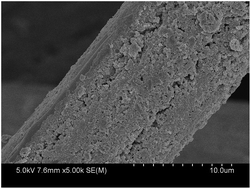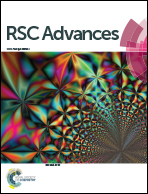Chemical synthesis and characterization of dodecylbenzene sulfonic acid-doped polyaniline/viscose fiber
Abstract
A dodecylbenzene sulfonic acid (DBSA) doped-polyaniline (PANI) coated conductive viscose fiber (VCF) was prepared by chemical oxidation polymerization in an ethanol/water solution. Fourier transform infrared spectra (FTIR) and XPS proved that an interaction between PANI and VCF formed in the PANI/VCF composites. The mild treatment did not result in the oxidation and degradation of VCF detected by thermal gravimetric analysis (TGA) and mechanical testing. Moreover, the influence of the reaction conditions including reaction time, aniline monomer (ANI) concentration, ammonium persulfate (APS) concentration and DBSA concentration on the morphology and the conductivity of the PANI/VCF composites were investigated in detail. The orthogonal experiments were designed to determine the optimal reaction conditions as follows: ethanol/water ratio (30/70), reaction time (18 h), ANI concentration (0.1 mol L−1), APS concentration (0.125 mol L−1) and DBSA concentration (0.1 mol L−1). When the PANI/VCF composite was washed 40 times in water, the conductivity still remained at 2.5 × 10−2 S cm−1, and this value was stable for more washing.


 Please wait while we load your content...
Please wait while we load your content...